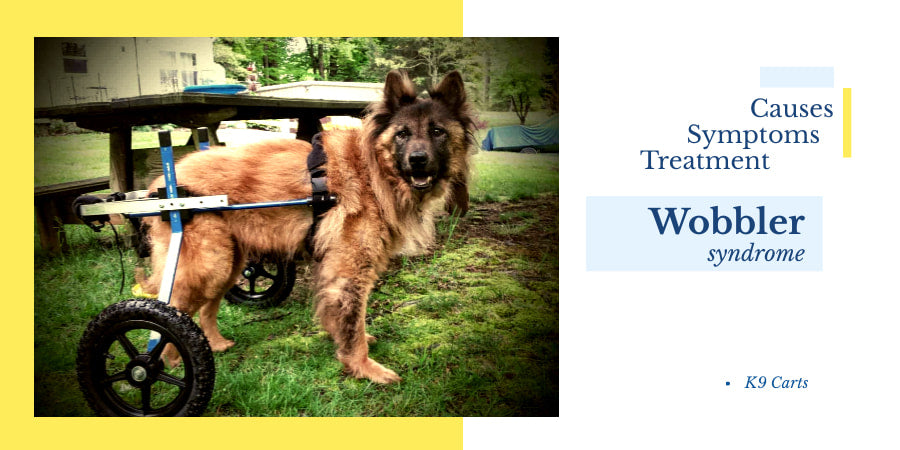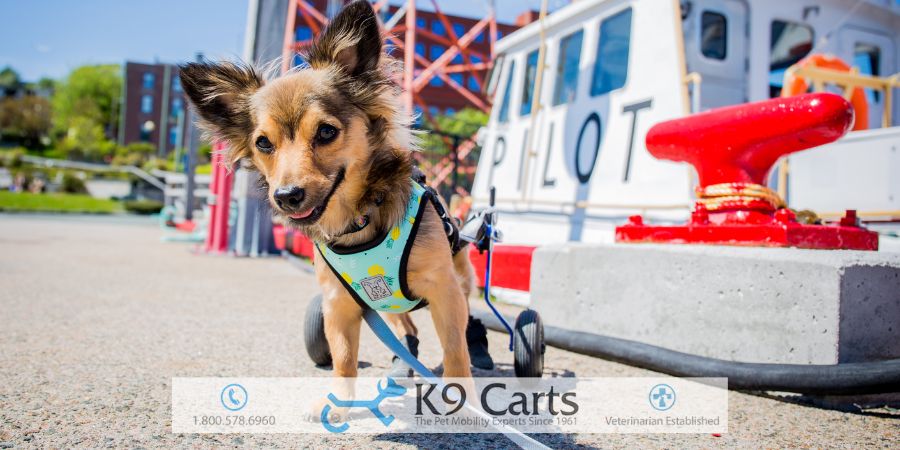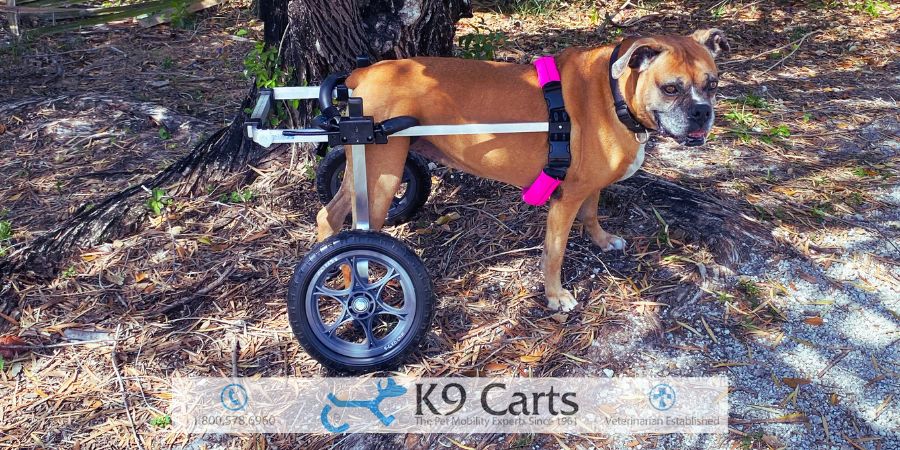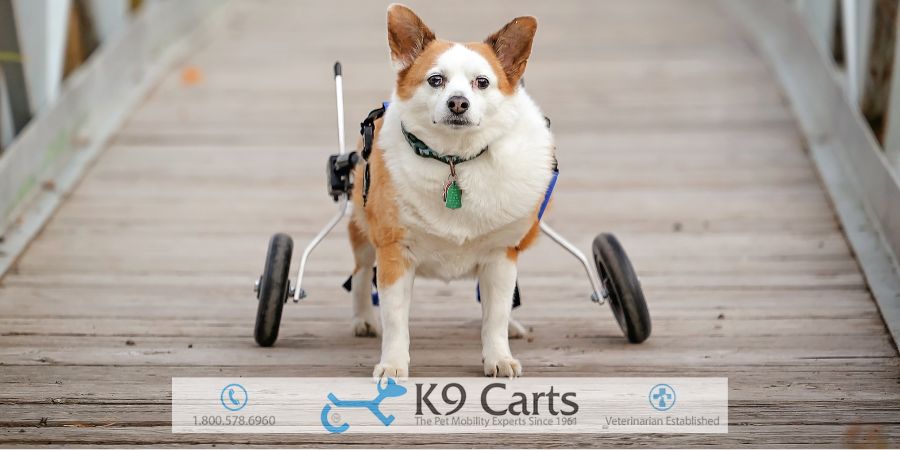Wobbler Syndrome in Dogs: Causes, Symptoms, and Treatment

Dogs can develop trouble with the stance and/or gait for many reasons, from age-related arthritis to traumatic accidents. In some cases, the problem lies not with the structures of the legs themselves, but with the passage of nerve signals to the limbs. If your dog has developed an oddly wobbly, stiff or unstable gait, it may suffer from a condition known as canine wobbler syndrome.
The more you understand about this progressive spinal problem, the more effectively you can help your four-legged friend enjoy the best possible quality of life.
What Is Canine Wobbler Syndrome?
Canine wobbler syndrome is a general term describing a progressive compression of the spinal cord in the cervical spine (the part that supports the neck and head). You may also hear it referred to as cervical vertical instability, spondylopathy, cervical vertebral malformation-malarticulation, cervical vertebral malformation, or cervical spondylomyelopathy.
The problem gets its nickname from the wobbly stance and gait that it typically causes. Canine wobbler syndrome often affects large breeds such as Doberman Pinschers and Great Danes, although it can also trouble smaller breeds.
Veterinarians have yet to identify any specific underlying risk factors for the disorder, although nutritional factors and rapid growth may be involved. Wobbler disease in dogs can develop early in life if the vertebrae of the neck take on an abnormal shape that pinches and deforms the spinal cord.
In middle-aged or geriatric dogs, wobbler syndrome more usually occurs due to one or more slipped vertebral discs that compress the nerve tissue. In either case, the compression disrupts the normal flow of nerve signals to the legs, causing progressive loss of function.
What Are the Symptoms of Canine Wobbler Syndrome?
As noted above, the hallmark sign of canine wobbler syndrome is a wobbly, unstable stance and gait. The problem usually affects the hind legs first, sometimes progressing to the front legs. Watch for the following signs and symptoms:- Difficulty sitting down or standing up - These coordinated actions prove challenging when the legs don't receive the necessary messages from the brain via the spinal cord.
- Gait changes - Your dog may walk more slowly than before, taking short steps with the legs spread far apart. Walking with the head pointed down may also indicate wobbler syndrome.
- Ataxia - This symptom involves coordination problems that affect your dog's stability.
- Paralysis - Severe wobbler syndrome can partially or completely paralyze the limbs.
- Muscle loss - your dog may lose muscle mass in or around the shoulders.
- Scuffed toenails - Dogs with wobbler syndrome may drag their feet, which damages the toenails.
- Neck symptoms - A dog with wobbler syndrome may experience acute or chronic neck pain and stiffness.
How Do Veterinarians Diagnose Wobbler Syndrome in Dogs?
Because other ailments or injuries can produce symptoms similar to those of canine wobbler syndrome, a proper diagnosis requires a comprehensive physical exam.
Tell your vet about any recent injuries or potential genetic issues that might affect your dog's condition. In addition to a neurological exam, your vet will use X-rays or other diagnostic imaging techniques to look for signs of cervical spinal compression.
Treatment Options for Wobbler Syndrome in Dogs
Your dog may need either medical or non-medical treatment for wobbler syndrome, depending on factors such as its age and the severity of its symptoms. Your veterinarian may recommend one or more of the following treatment options:1. Medication
Anti-inflammatory drugs such as NSAIDs and steroids may help ease neck pain and reduce any swelling that makes the compression worse.2. Activity restriction
Your dog may need to avoid running, jumping, or even walking for several weeks. If your dog can't walk at all due to wobbler syndrome, you'll want to keep it comfortable on soft bedding. Change your dog's position every few hours to prevent bedsores.3. Catheterization
If your dog can't or shouldn't get up to go to the bathroom, a urinary catheter can aid in elimination.4. Surgery
Dogs with severe wobbler syndrome who don;t respond to conservative care may need spinal surgery to remove pressure from the spinal cord and prevent further damage. You might assume that your dog can benefit from a cervical collar to combat neck pain and stiffness. However, these devices can do more harm than good in cases of wobbler syndrome.
If your dog undergoes surgery for wobbler syndrome, it will need two to three months of post-operative rest and rehabilitation. Your veterinarian may also recommend physical therapy. Even with successful treatment, however, many dogs remain partially disabled. Their condition may remain stable, or new spinal compression problems may develop.
Mobility Assistance for Severely Affected Pets
Even if your dog remains disabled by wobbler syndrome, you can still help it get around and enjoy life with the aid of assistive devices such as pet wheelchairs.
A dog who mainly suffers from hind leg disability can benefit from a wheelchair that supports only the rear part of the body, while a dog who also has weak, wobbly front legs can benefit from a wheelchair that offers full-body support.
You'll find the solution your dog needs at K9 Carts. We offer both rear-support and full-support wheelchairs that can be custom-fitted for your individual pet. These sturdy, high-quality wheelchairs make walking easier and help your dog remain stable on its feet, reducing the risks of tripping and falling and giving your best friend a new lease on life.
We can also equip you with a lift harness if your dog just needs some extra help instead of (or in addition to) a wheelchair.
If your veterinarian agrees that your dog could use this kind of assistance, browse our online selection and read our information about wheelchair and harness measurements before placing your order. Feel free to contact us with any questions you may have about ordering the right assistive device for your dog.






